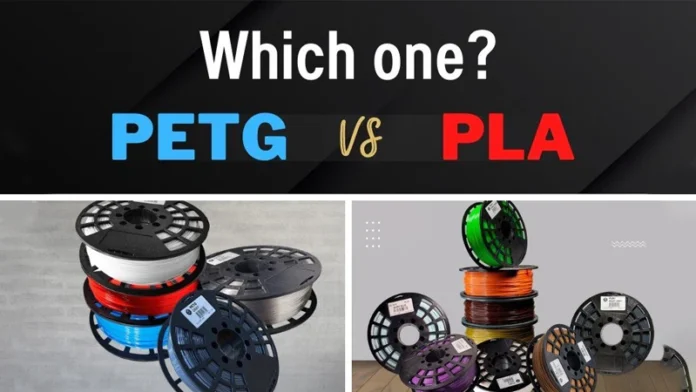To 3D print the best result, we all know that filament quality and its condition/property play one of the biggest roles. However, since we are moving into the months of humidity, moisture is often considered a villain in the 3D printing community.
Picture this: you are painting the perfect possible quality print, but suddenly, the result is inconsistent, stringing occurs, and in worst cases, the whole print falls down. This is all due to moisture.
PLA and PETG are two of the most commonly used filaments, but which one needs drying more? Today, we’re covering the two filaments, their properties relating to moisture, and which one needs a 3D printer filament dryer more.
Moisture: Why Is It Kryptonite to Filaments?
The word hygroscopic is quite common in the 3D printing community. If you don’t know what it is, if something is hygroscopic, it can absorb moisture right from the air. So, what happens when a filament absorbs water? Well, the moisture inside the filament ultimately goes into the hotend, where it boils.
This causes issues like bubbles, stringing, inconsistent prints, and, worst of all, poor layer adhesion. These issues can break your 3D prints, resulting in a lot of money lost. When a filament is dry, you get smoother finishes, greater details, stronger layer bonding with the printing bed, and almost no chances of failure.
Hence, a lot of 3D printer manufacturers and accessory brands like Chitu Systems are offering filament dryers that are game-changers. Here’s how a dryer helps you maintain and gain better results from your 3D printer.
The Power of a Filament Dryer
There are many filament dryers on the market, but Chitu System’s FilaPartner E1 Filament Dryer is one of the most unique and versatile products you can buy to ensure that your 3D prints are amazing.
The dryer comes with two different compartments, allowing you to dry multiple filaments side-by-side. This is ideal for when you are doing multi-colored printing. To make things interesting, you are also getting a simple-to-use control and temperature monitoring system that tells you everything about humidity control.
Here are some of the benefits you get with the FilaPartner E1:
- Easy to monitor temperature and heat up to 70°C, making it perfect for filaments like PLA and Nylon.
- Easy touch controls to monitor humidity.
- Cost-effective and easier to buy online.
- Printing while drying functionality is available for a moisture-free experience.
Overall, this filament perfectly provides high value, but there are many other players in the 3D printing game as well.
PETG Filament and Moisture: Why Does It Need Drying More Often?
PETG is also known as Polyethylene Terephthalate Glycol. On paper, it is one of the toughest, most flexible, and chemically resistant filaments. In short, it offers the perfect blend of PLA along with the durability of ABS.
The main reason why most people use PETG is because it is easier to create mechanical parts and objects that need more of a tough design. But even though it has many benefits, it has one huge issue and that is moisture.
Being hygroscopic, PETG absorbs moisture quickly from the air. In short, even a 12-24 hour exposure in the open air can make your prints fail. When the filament absorbs moisture, then issues like stringing, rougher surfaces, and more happen, which is why most people take it away from moisture.
Therefore, PETG needs to be dried regularly, and the most common thing that people do is to keep it in a sealed bag or container for a few days. Here are some of the reasons why PETG needs drying:
- It absorbs moisture much faster than other filaments.
- Moisture can cause severe stringing and overall surface deformity.
- When PETG is wet, it will print weak objects.
- Even new spools will benefit highly from drying before printing.
PLA Filament and Moisture: Vulnerable Yet Still Less Hygroscopic
PLA is known for being more temperature-friendly and having an amazing surface finish. Most people use PLA as their first printing filament because of how easy it is to use. Moreover, thanks to its less hygroscopic nature, PLA is a bit more forgiving but still vulnerable to moisture.
Once PLA absorbs water, you might see issues like inconsistent results, matte surfaces, or even stringing. So, drying PLA is not always important, especially if it has been stored properly, but you still need to be careful with it.
- PLA doesn’t always have to be dried because it absorbs, but it is much slower than PETG.
- Wet PLA will cause mild stringing and dull finishes sometimes,but it isn’t something that happens too much.
- So, the best drying conditions for PLA is to be put between 40–45°C for 4–6 hours.
- You can still dry PLA using a filament dryer if you are living in a very humid environment.
So, Which One Needs More Drying?
When we compared both PETG and PLA, looking at their properties, PETG does need much more attention when it comes to drying. Not only does it absorb moisture faster but the negative effects make it almost impossible for you to have a normal print.
Moreover, Wet PETG has issues like excessive stringing, bubbling that will be visible on your prints, and quality that would ultimately make you question your existence.
Overall, drying is a major component of making your 3D prints better and you should definitely be considered important.
Final Verdict
Moisture is the leading cause of most failed prints and that’s why getting a filament drying solution should be a priority for you. Moreover, if you’d like to buy 3D printer accessories with the finest quality, visit Chitu Systems out.
